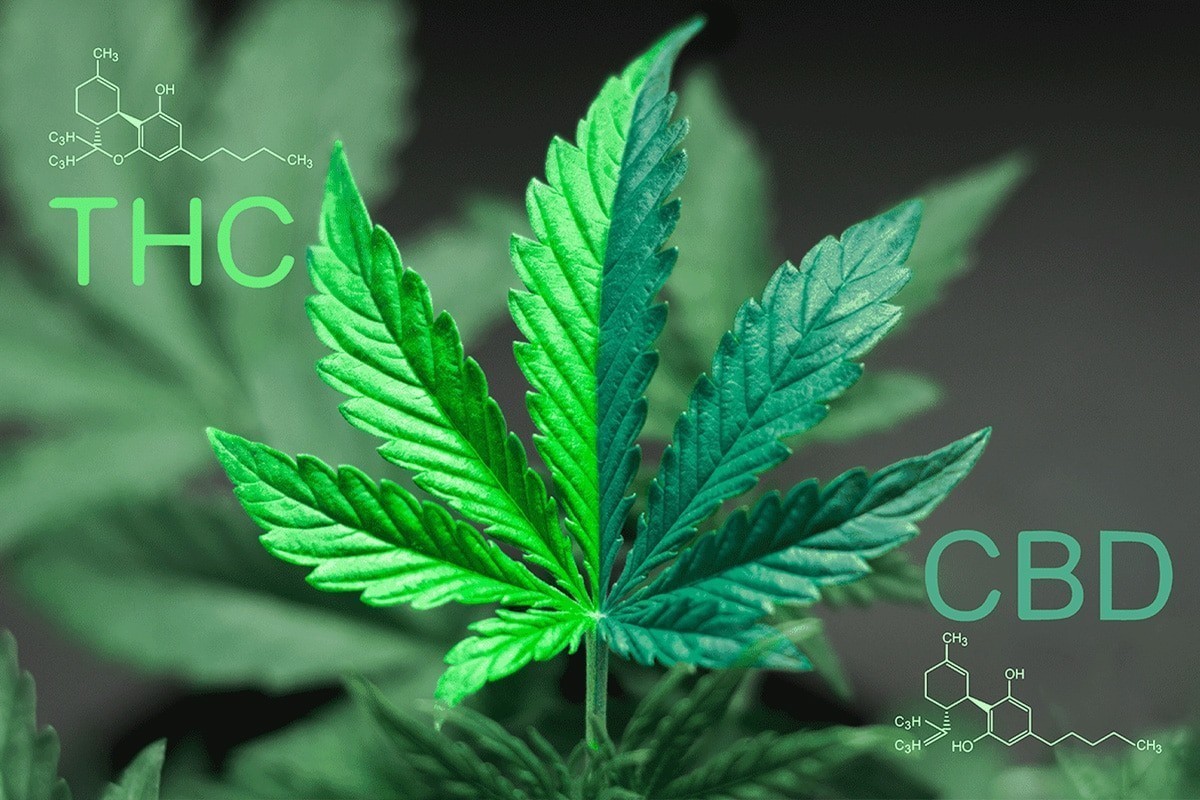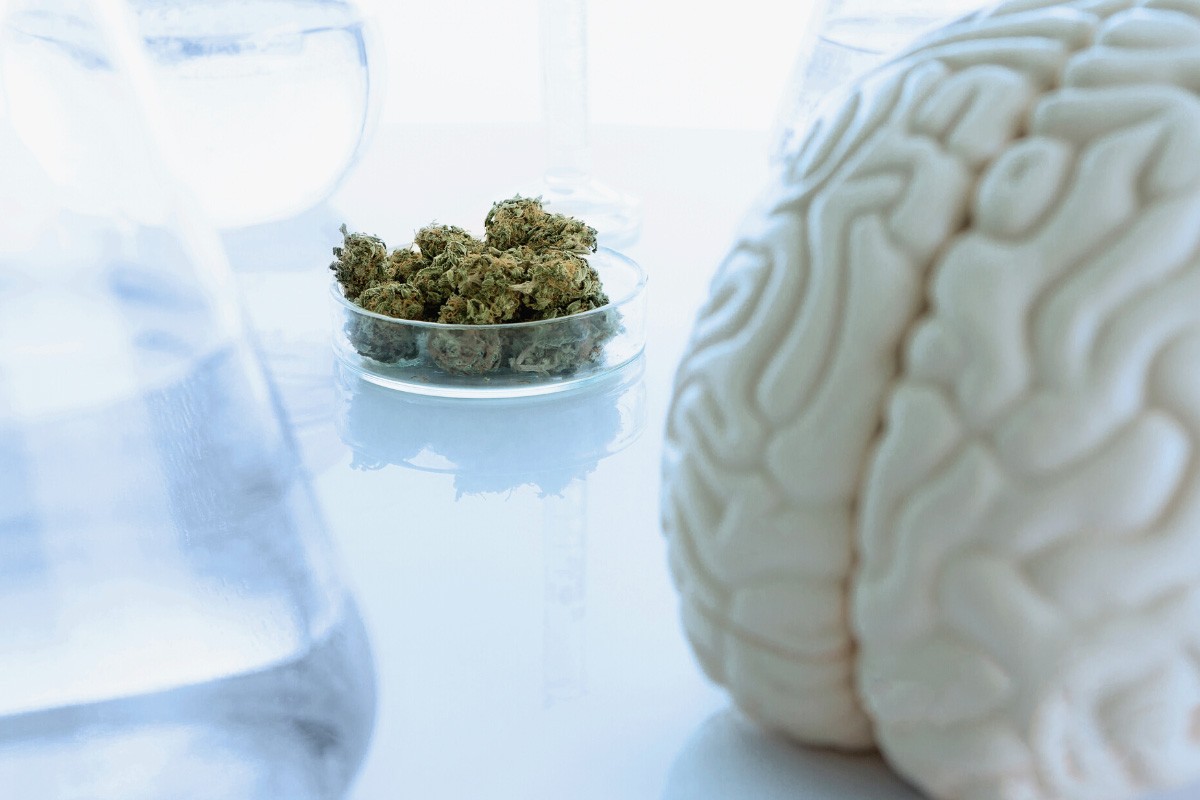Medical cannabis is a descriptive term for all cannabis-based medicines, either derived from the cannabis plant or synthetically produced. The cannabis sativa plant consists of more than 500 different plant constituents, including about 145 cannabinoids. The rest consists mostly of terpenes and flavonoids, that are responsible for the smell and taste of the plants. The medical effects of the cannabis plant are mainly caused by the substances it contains, delta-9-tetrahydrocannabinol (THC) and cannabidiol (CBD) (1). In numerous studies, THC has been shown to have analgesic, sleep-inducing, appetite-stimulating, and muscle-relaxing effects (2-4). In addition, THC can induce euphoric effects in higher doses. Unlike THC-containing medical cannabis, CBD has no psychoactive effect and has anti-inflammatory, antioxidant, anti-anxiety and anti-epileptic properties (5-8).
The endocannabinoid system and the effect of endocannabinoids
Cannabinoids interact with the body’s own endocannabinoid system to modulate bodily responses. The endocannabinoid system is part of the nervous system and is located throughout the entire body. The broad therapeutic potential of cannabis-based medicine is based on this wide spread of the endocannabinoid system in the human organism. The effect of the endocannabinoid system is modulated predominantly through the cannabinoid receptors 1 and 2. Through these receptors, the endocannabinoid system exerts an effect on other neurotransmitters of the brain. As a complex neurotransmitter system, it performs key biological functions. The main function of the endocannabinoid system is to inhibit overactivity of other neurotransmitters, such as dopamine, gamma-aminobutyric acid (GABA), glutamate and serotonin. This reduction is caused by the activation of specific cannabinoid receptors (1, 9).
Cannabinoid 1 (CB1) receptors are located on cells in the central nervous system and in various other organs. Accordingly, treatment of neurodegenerative diseases such as Alzheimer’s is possible. In addition, a large number of CB1 receptors are located on cells of the cardiovascular system. Cannabinoid 2 (CB2) receptors are located on cells of the immune system. In addition, there are receptors in bones, skin, digestive tract, lungs or eyes. Thus, treatment with cannabis-based medications can be helpful for a wide range of conditions that affect the central nervous system as well as relieve physical symptoms such as pain. The activation of the CB2 receptor specifically inhibits an excessive immune response in terms of inflammation (1, 9, 10).
Due to this specific interaction of the endocannabinoid system via the neurotransmitters and the influence on the immune system, cannabis-based medicine is a therapeutic option for many systemic diseases. In different diseases, the treatment with medical cannabis can therefore influence the endocannabinoid system and ameliorate symptoms such as chronic pain, migraine, chronic inflammatory diseases (e.g. arthritis, Crohn’s disease), skin diseases, epilepsy, hyperkinetic movement disorders, spasticity, nausea or loss of appetite (3, 11-14).
Medical Cannabis
Cannabis-based medicines contain a variety of components, such as cannabinoids, terpenes and flavonoids – with the most prominent components being THC and CBD. When choosing a medication, the percentage of THC and CBD plays an important role. Medical cannabis is used as a therapy in various dosage forms, such as cannabis flowers, cannabis extracts, capsules or oils. Accordingly, the form of administration also varies from oral ingestion (for example cannabis-oil and capsules) to inhalation (either using a special vaporizer or smoking) (15, 16). Medical cannabis containing THC requires a prescription and is subject to the German Narcotics Act (BtMG). High-dose CBD as an extract is also subject to prescription in Germany and treatment with high-dose CBD should be accompanied by a physician. Under medical supervision, the composition of medical cannabis products can be adapted specifically to the symptoms of patients. Depending on the disease, a higher THC content may be beneficial. For other diseases a stronger focus on CBD can lead to better therapeutic effects.
Cannabis plants for medicinal use are subject to strict purity guidelines. In addition, the specific composition of cannabinoids is controlled to ensure efficacy for patients. Furthermore, the plants are processed after harvest and irradiated like other medical products to prevent contamination of the products (17, 18).
Over-the-counter CBD-based products
In Germany, there are a variety of over-the-counter CBD-containing products, such as edibles with CBD or CBD oil for cosmetic and medical use. However, it is important to note that these over-the-counter products lack proof and sufficient scientific evidence for their efficacy. In addition, these lifestyle products are not regulated and usually contain very low and thus pharmacologically ineffective amounts of CBD that are lower than the amounts tested in clinical studies. In addition, it cannot be ruled out, that the commercialized over-the-counter CBD products may also contain the psychoactive component THC. There is no standardized limit for the amount of THC in lifestyle CBD products in Europe and producers are not controlled for their adherence to recommended guideline values.
Are you seeking treatment with medical cannabis or CBD?
Medical cannabis (containing THC) and high-dose CBD can be used for the treatment of various indications, such as chronic pain, sleep disorders, migraines or headaches, depressive disorders, ADHD, menstrual cramps, menopausal symptoms and many more (5-8, 19-21). In numerous clinical studies, medical cannabis and high-dose CBD showed high efficacy with only minor side effects. In addition, therapy with cannabis-based medicine reduced the need to take other medications in some studies. A therapy with medical cannabis and high-dose CBD should always be accompanied by a doctor.








